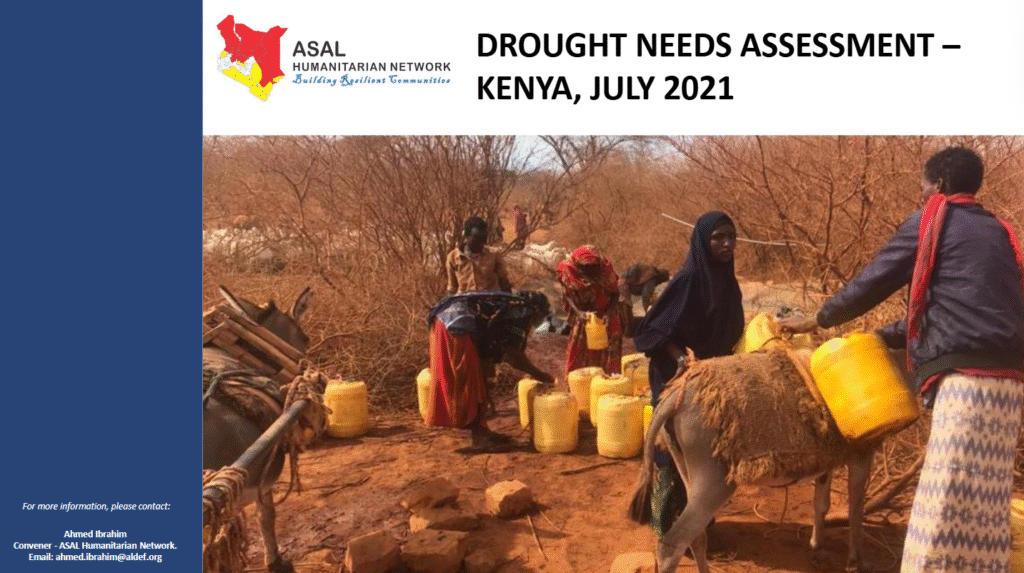ASAL Humanitarian Network (AHN)
ASAL Humanitarian Network – Drought Situation Analysis
Early Assessment Reveals Deepening Food Insecurity and Livelihood Erosion Across Nine ASAL Counties
Drought Needs Assessment – July 2021
The ASAL Humanitarian Network (AHN) conducted a Drought Needs Assessment between 13 and 15 July 2021, with technical support from ACTED, to document the rapidly worsening drought situation following a below-average March–May long rain season. The assessment covered nine counties—Baringo, Garissa, Isiolo, Mandera, Marsabit, Samburu, Tana River, Turkana, and Wajir—and collected 113 key informant interviews across county, sub-county, and community levels.
Findings indicated that over two million people were already food insecure (IPC Phase 3 and 4), with pastoralists comprising 70% of affected livelihoods. Market purchases (43%) and own livestock (32%) were the main food sources, but drought, locust infestation, and COVID-19 restrictions had disrupted trade and spiked food prices. Pasture depletion averaged 59%, while 86% of respondents reported livestock trekking more than one hour to water sources.
Protection and safety concerns were widespread: 79% of respondents reported increased inter-community conflict over water and pasture. Women and children were identified as the most affected groups, often left behind as men migrated with livestock.
WASH and public health indicators showed critical stress — 86% of respondents paid for water (average KES 14 per 20L jerrycan), 81% reported unmet household water needs, and only 34% of the population practiced handwashing. Open defecation remained high (49%), and latrine coverage averaged just 40%.
Priority needs identified across all counties were water (41%), food or cash (41%), education (21%), and security (17%). Respondents emphasized urgent humanitarian interventions to restore access to food, water, and livelihoods before further deterioration.
The assessment provided the analytical foundation for the #DroughtKE21 advocacy campaign (Nov 2021) and the design of AHN’s multi-purpose cash transfer programme, which would later reach thousands of drought-affected households across Kenya’s ASAL region.

